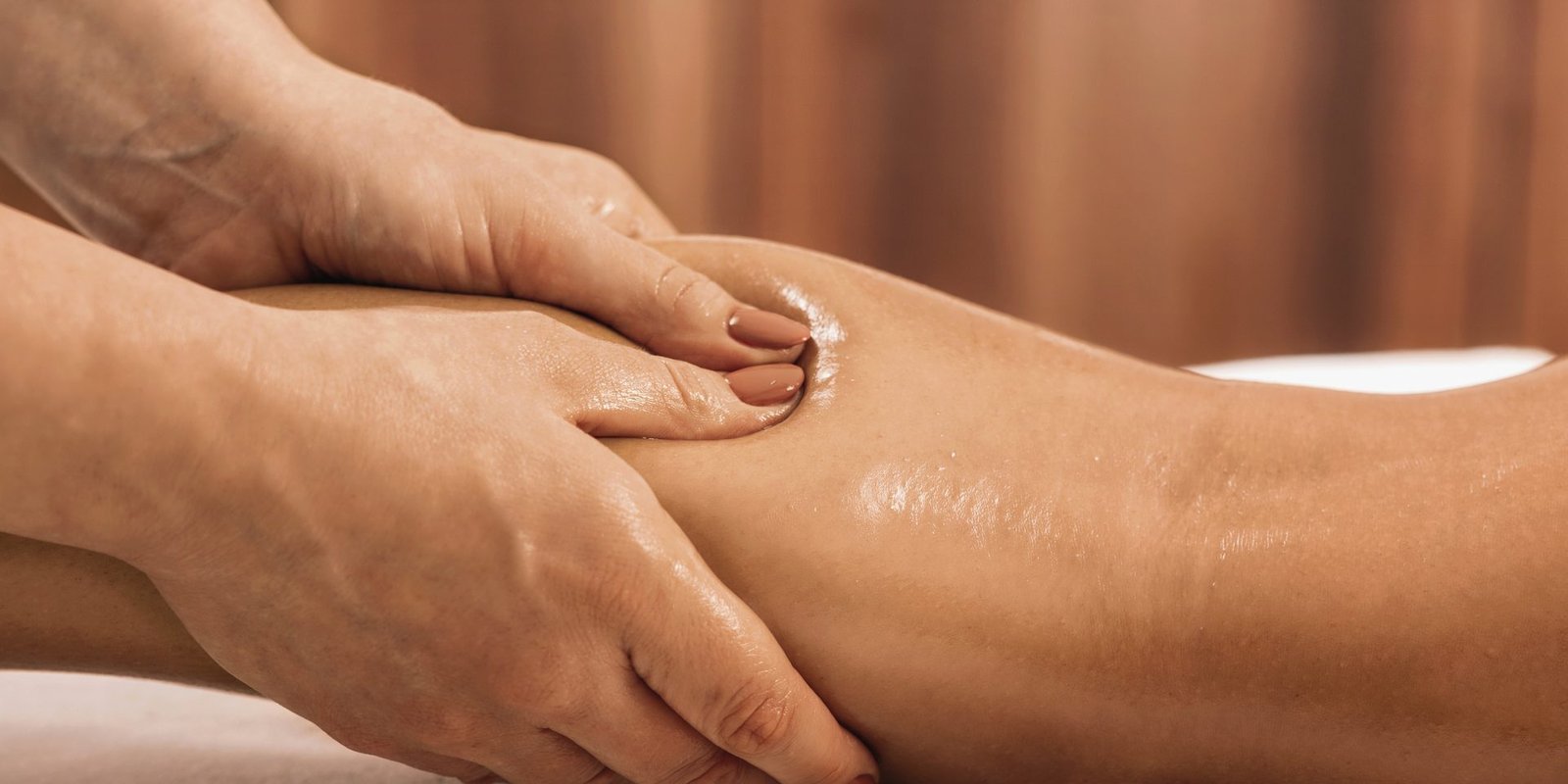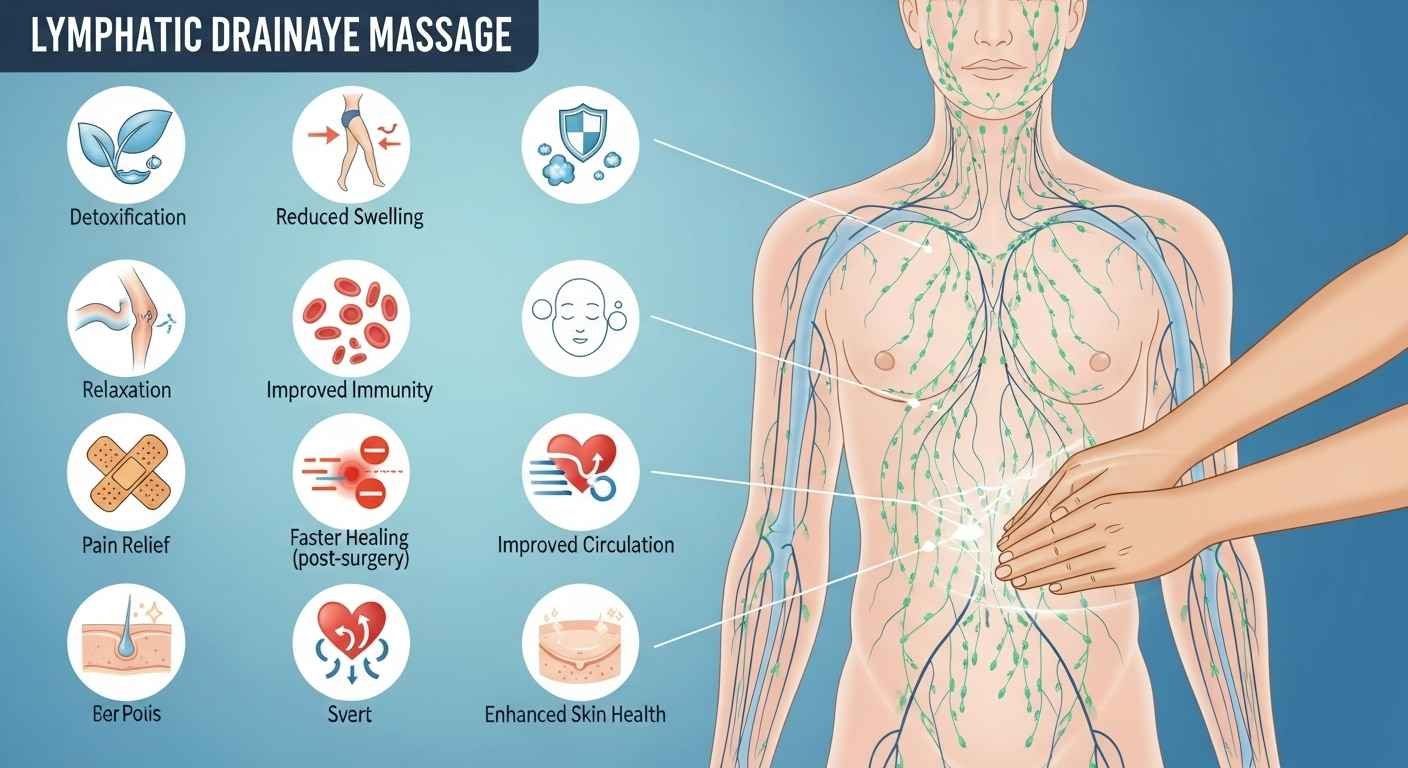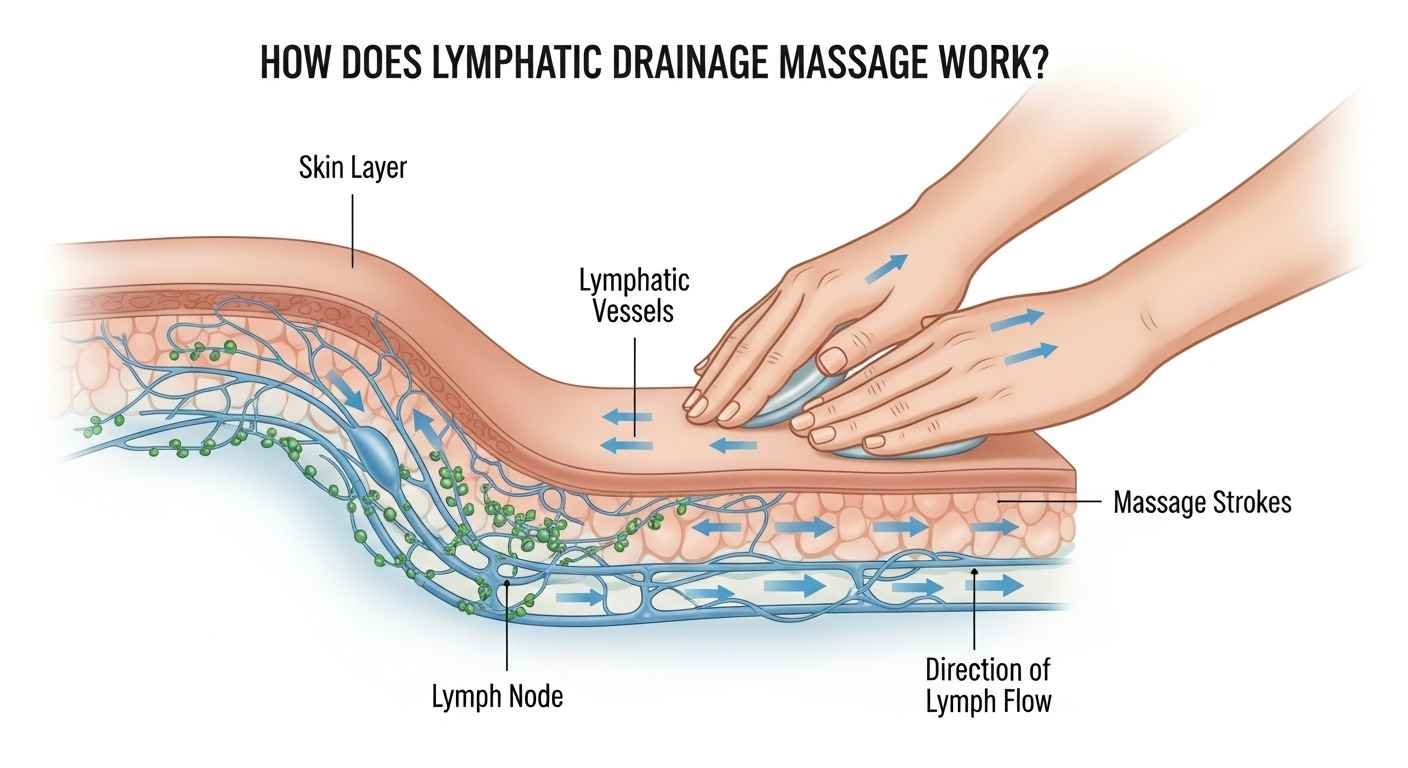Our health and well-being is more important than ever in todays fast paced world. As more health fads develop, lymphatic drainage massage is one trend that has gained attention. With benefits that extend from detoxification to support of the immune system, this rejuvenating therapy does it all. In this blog, we uncover the treasure of lymphatic drainage massage and its contribution towards our well-being.
Lymphatic drainage massage is a specific type of therapeutic massage that facilitates the movement of lymphatic fluid through the lymphatic system. This as well as gentle rhythmic lymphatic drain massage specifically addresses the lymphatic vessels, which help the body to remove waste, toxins and excess fluid. Another benefit of lymphatic massage is that it stimulates the lymphatic system and boosts the detoxifying process in the body and thus ultimate well-being.
The lymphatic system is important for immune function homeostasis and fluid homeostasis. It is made up of a system of lymphatic vessels and lymph nodes that carry lymph, a clear fluid that carries immune cells, around the body. It is also an important part of the immune system and can trap foreign objects like bacteria or viruses as well as cellular debris.
When the lymphatic system is compromised due to surgery, injury, sedentary lifestyle or illness, it can lead to lymphatic congestion. It can cause swelling, pain and impaired immune function. This helps to clear out the lymphatic system of stagnant waste, reduce swelling and in turn the risk of infection by encouraging lymph fluid to circulate through the body at a healthy rate.
Understanding the Lymphatic System
The lymphatic system, however, is the major and most sensitive part of the immune system. Lymphatic vessels, lymph nodes, and several organs create an enormous team to get rid of wastes, poisons, and aliens from the body and in some places or instances to even react immunologically to infection. The lymphatic system carries lymph, white blood cells in a clear fluid around the body. These lymphatic vessels are much like blood vessels, only they have thinner walls and carry lymph instead of blood. It is this network of vessels that reaches almost all of the tissues and organs within the human body. They are small, bean-shaped structures situated all along the course of the lymphatic vessels. Lymph nodes filter and cleanse harmful substances-bacteria and viruses in lymph. Besides, in the lymph nodes, there are immune cells, lymphocytes, which help in the recognition and elimination of the foreign invaders.
Benefits of Lymphatic Drainage Massage
It is known as lymphatic drainage massage since the only goal in this case is to induce the flow of the fluid in the lymphatic system. Benefits that will accrue to the body from such a massage are numerous in nature.
The benefits elicited from the lymphatic drainage massage on the body include the subsequent aspects:
- Detoxification
- Swelling and edema reduction
- Better functioning within the immune system
- In turn, it will bring relaxation and lower stress levels
- The process of healing and recovery is also bettered
- Pain and discomfort are also relieved
Detoxification
Reduces swelling and helps to eliminate waste products and excess fluids from the body. It enhances the natural detox process in the body relatively by just improving the circulation of lymph, as it helps to relieve tissues of metabolic waste and toxins. It also reduces swelling and edema.
Lymphatic drainage massage often proves very effective in the reduction of swelling and edemas. Holding back of fluids, puffiness or swelling since is the case for clients with these conditions, mainly in the legs, ankles, and arms, can be relieved by such a type of massage. The best possible way to make all the excess fluids go away from the system and hence reduce the swelling by promoting a more balanced distribution of fluid is indicated by lymphatic flow stimulated by the massage.
Improved immune system function
The lymphatic system is very critical in the immunity of the body. A lymphatic drainage massage will bring the immune system into enhancement because it will increase production and effective circulation of lymphocytes, which are some of the key immune body cells used in fighting infections and supporting general immune function. By promoting lymphatic flow, the technique will, therefore, help in enhancing the body’s defense mechanisms.
General relaxation and stress reduction
Like any other massage, lymphatic drainage massage relaxes and relieves stress. Its technique uses gentle rhythmic movements, which may induce a deep sense of relaxation because it calms the nervous system and leads to a general state of well-being. Meanwhile, muscle tension can be relieved while the body achieves a general state of relaxation.
Place and time of therapy
Lymphatic drainage massage may assist in post-surgical healing and recovery. Pain will be managed together with swelling; this is because it will increase the flow of lymphatics thereby hastening the healing process and reducing scar tissue formation. It normally is used to treat post-operative conditions such as lymphedema or swelling that would arise following a cosmetic surgical operation.
It Removes Pain and Discomfort
This massage is good for pain relief. It helps relieve pain from fibromyalgia, arthritis, and migraines. In addition, it will help reduce inflammation, as well as enable the muscles to remove waste products and take in oxygen and nutrients. The result is the eradication of pain due to muscle soreness and any other injury.
How Does Lymphatic Drainage Massage Work?
It is known as lymphatic drainage massage and in fact, is going to specialize in using massage to stimulate the lymphatic system which in turn makes sure that lymph fluid is moving, as well as draining throughout the body. The lymphatic system, as known, is another very important mechanism in the fight against infection and to remove waste and toxins. The lymphatic system consists of vessels, nodes, and organs which carry lymph, a clear and colorless fluid containing white blood cells, proteins, and other waste from the cells. The blood is under very lower pressure through the absence of a pump as is the case with the heart. As such, it is the muscles which help propel the fluid and the body tissues in which the fluid passes through for the circulation of lymph. The therapist will use very light strokes and mild pressure in the performance of a lymphatic drainage massage. The strokes should be rhythmic and move in circles and up and down the direction of lymph flow. These strokes help in encouraging lymphatic vessels to open and enable lymph fluid to be moved through the system.
The major goals of the lymphatic drainage massage will be to:
1. Circulate the lymph more
2. Lesser swelling and edema
3. Strengthened immune system
4. Body Relaxation Increase
Lymphatic Circulation Gentle strokes and movements of the massage will stimulate the contraction of lymphatic vessels, which are how lymph fluid moves. This increased circulation would then remove the bacteria, toxins, waste products, and excess fluid from the body. Reduction of Swelling and Edema Lymphatic drainage massage has been known to significantly decrease swelling and edema, for instance, lymphedema or swelling after surgery.
Lymphatic massage promotes the movement of excess fluids out of affected regions, allowing swelling to decrease. Enhance your immune system. The lymphatic system has one of the best immune functions as it is what filters and gets rid of pathogens and foreign substances in the body.
Lymphatic drainage massage boosts the immunity that fights infections so that a person can keep healthy. Downtime Lymphatic drainage massage being slow and calming goes deep to bring a state of total well-being. It eases tension for better sleep and is able to start the natural processes of healing within the body.
Who Can Benefit from Lymphatic Drainage Massage?
Post-surgical conditions are such situations where it’s necessarily indicated. Here’s who stands to gain from lymphatic drainage massage:
1. Patients with lymphedema: Patients with lymphedema have high accumulation of lymphatic fluid, which makes them swell in certain parts of their bodies. Lymphatic drainage massage helps reduce the swelling and promotes the flow of lymphatic fluid, giving a lot of relief to the patients.
2. Post-surgery patients:
Clients suffering from edema:
A patient can reduce postsurgical swelling by undergoing lymphatic drainage massage after surgery, most notably after surgeries where either the lymph nodes are removed or there is a trauma to the lymphatic system. The process will eventually help in the healing process and prevent further complications, such as seromas or fibrosis.
Individuals with immune system disorders:
This is achievable by improving the lymphatic flow stimulated by a lymphatic drainage massage to assist persons with immune system disorders, mainly autoimmune, in the process of waste and toxic materials removal from their bodies. Conversely, it may also help create a stronger immune response. Those experiencing water retention or edema:
General Use: With such people who have fluid retention or suffer from edema, the lymphatic drainage massage can help them up to a certain extent by allowing them to remove the excess fluid that is stuck in the tissues and causing swelling and pain. Detox Seekers: Lymphatic drainage massage expedites the process of toxic and waste material removal from the body and may possibly support detoxification.
This can be helpful for those who need general detoxification or cleansing. Athletes, Active populations: It enhances athletic performance by optimizing blood and lymph circulation, in addition to accelerating recovery by reducing muscle soreness. It is also effective in reducing inflammation which ensures a quicker healing process for the athlete.
Lymphatic drainage massage can benefit clients with different skin pathologies. It starts with acne, followed by clients with Rosacea, and, finally, those with Eczema. When the massage improves lymph flow and, most importantly, blood circulation, the three contraindications will be gone.
Lymphatic drainage massage is likely to have inducing effects on relaxation. In that, its gentle and rhythmic strokes facilitate the calming of presiding nerves, thus able to help reduce stress and provide a type of feeling associated with relaxing and feeling well.
What to Expect During a Lymphatic Drainage Massage Session
The lymphatic drainage massage session is very relaxing and gentle. This type of massage focuses on the stimulation of the lymphatic system for detoxification, thereby promoting well being. It is directed to encourage better lymph flow, i.e., the fluid that clears waste products and toxins from the tissues and moves them towards the lymph nodes, out of the body.
Before the session, the massage therapist will typically check in with you. This will be your chance to share your health history, express any concerns or goals you might have, and ask any questions you might have about the type of massage they think would be best for you. In this regard, frank conversation with the therapist is very crucial for them to clearly understand what you need, hence preparing their treatment appropriately.
You will most often be lying on a massage table in a comforting room with soft lighting. The therapist uses gentle hand and finger pressure, moving in light, rhythmic strokes following the lymphatic pathways on your body. These movements stretch the skin and underlying tissues to assist in the stimulation of the flow of lymph.
Lymphatic drainage massage is usually a painless and relaxing experience. The pressure used is usually very gentle, as the intention is to promote lymph flow, not cause discomfort. While the therapist may target specific areas of your body with lymphatic congestion or swelling—like the neck, underpits, and groin—they’ll also be working on other areas to support overall treatment.
Precautions and considerations
Although lymphatic drainage massage is generally safe and well-tolerated, there are a few precautions to consider. People with certain health problems, for example, those with active infections, congestive heart failure or kidney disease, should speak to their health care provider before having this massage method.
Incorporating Lymphatic Drainage Massage into Your Wellness Routine
To make lymphatic drainage massage a part of your wellness routine, you may consider approaching any certified massage therapist who has been trained in this method and can customize the session based on your requirements as well as guide you on the frequency of treatment.
Other Methods to Enhance Lymphatic Drainage
Apart from lymphatic drainage massage, there are other methods and practices that complement and facilitate the working of the lymphatic system.
1. Regular Physical Activity
2. Having Ample Water
3. Balanced Diet
4. Dry Skin Massage
5. Bandaging
6. Contrast Bath
Exercise: Try brisk walking, swimming, or for that matter yoga; it increases lymph flow. The most important thing for good lymphatic function is adequate hydration. Because drinking water can keep the fluid moving and also assist in the removal of toxins.
Healthy Diet: Ingesting a well-balanced diet, full of fruits, vegetables, and some lean proteins gives your body all the nutrients it needs to keep your lymph system healthy. In addition to that eating no processed foods, trying to keep salt content low, and abstaining from sugars that are refined will lower inflammation and help the detox process.
Dry Brushing: One of the processes which is done in dry brushing involves very gentle brushing on the skin using a very dry and a very soft bristle brush. It acts for the exfoliation of skin and improve blood circulation can stimulate the lymphatic system as well.
Compression Garments: Another effective measure involves the use of compression garments. It acts as an aid to flow the lymph fluid by providing gentle pressure; this includes compression stockings or sleeves.
Hot and Cold Therapy: Favor stimulating lymphatic circulation with alternate hot and cold water during showers or application of either hot or cold packs. Because the alternating temperature stimulates the blood flow plus encourages lymph fluid motion.
Impacting our general health and well-being is one of the benefits that lymphatic drainage massage promises. The gentle and rhythmic massage can detoxify, reduce swelling, boost the immune system, and even improve the condition of the skin. This massage can become a more integral part of the other supporting practices: exercises, a good diet, and hydration practices, leading to maintaining such a youthful, vibrant, and healthy body. Add this rejuvenating treatment to your regimen, and take accelerating steps toward a healthier, more vibrant life.
Frequently Asked Questions:
- So what is lymphatic drainage massage?Lymphatic drainage massage is a type of therapeutic massage that is performed to promote the natural circulation of the lymph and other body fluids. It consists of soft, rhythmic strokes performed over parts of the body to stimulate the movement of lymphatic fluid, assisting with detoxification and helping the immune system work around the body.
2. How long does it usually take for a lymphatic drainage massage session?
Lymphatic drainage massage sessions can differ in length depending on personal preference and need. Typically, a session could range from 60 to 90 minutes. As per your needs, however shorter or longer sessions can be set up.
3. Which contraindications or precautions are for lymphatic drainage massag?
A lymphatic drainage massage is generally safe, but there are some contraindications and cautions you should be aware of. People with the following conditions should avoid lymphatic drainage massage: an active infection, acute inflammation, blood clots, congestive heart failure, or certain types of cancer. Before undergoing lymphatic drainage massage, it is advisable to consult a healthcare provider, as it may not be suitable for everyone.
How many sessions of lymphatic drainage massage do you recommend?
The number of recommended sessions will vary by person. For overall health maintenance, regular-filled sessions are ideal too. If you are looking for lymphatic drainage massage for a specific reason, such as recovery after surgery or lymphedema management, a course of sessions may be advised. A healthcare professional or qualified massage therapist can discuss what frequency and duration of sessions would be best based on your specific needs.









